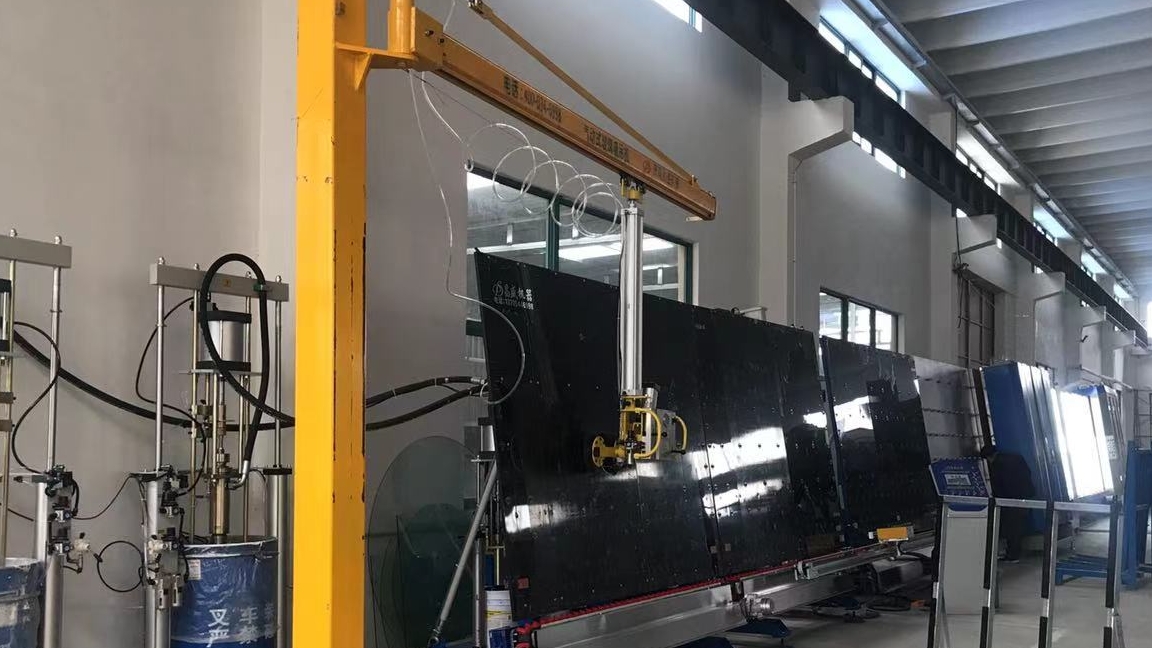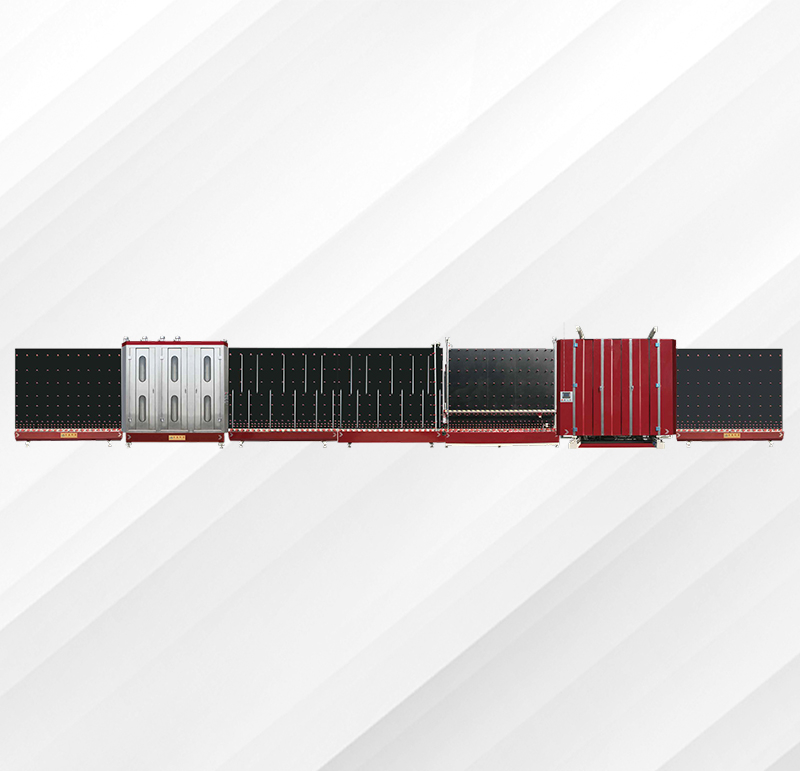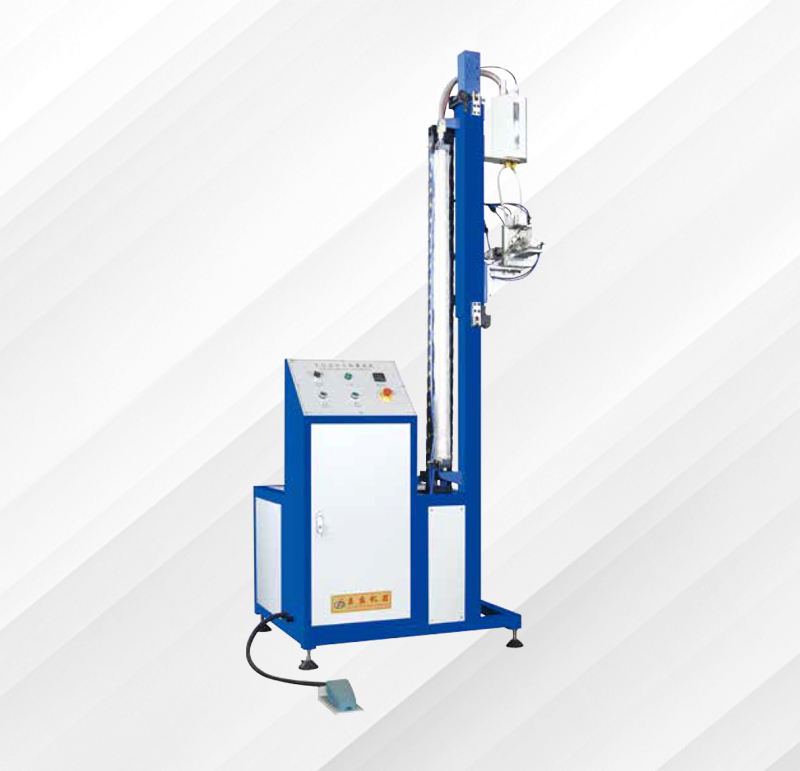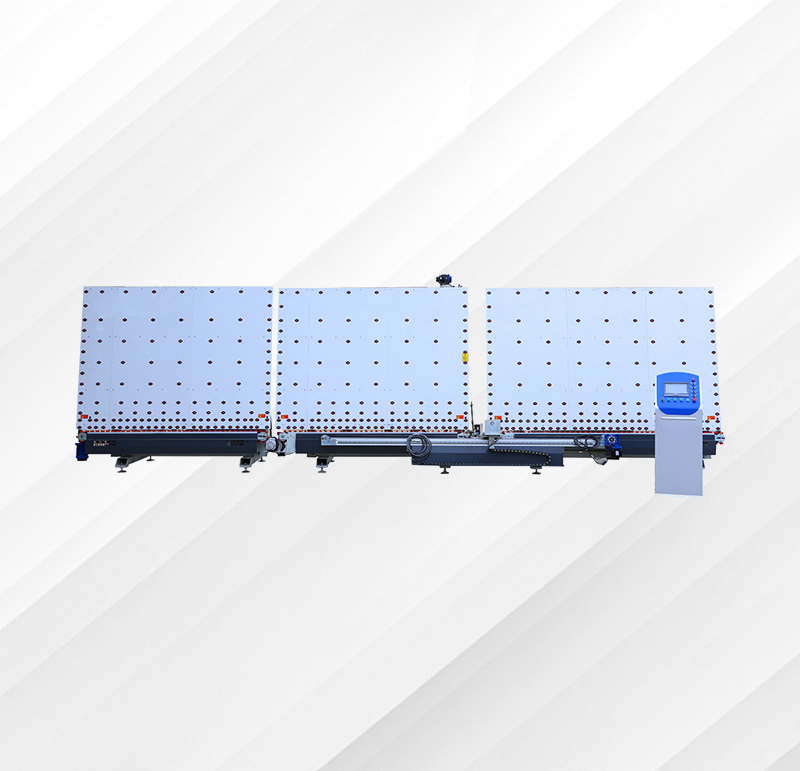
中空玻璃加工设备故障分析流程
时间:2025-11-14 来源:http://www.jncsjx.com/ 发布人:昌盛机械
中空玻璃加工设备故障分析流程
Fault analysis process for insulated glass equipment
在进行故障分析时,应遵循一定的程序这种程序大致如下:
When conducting fault analysis, a certain procedure should be followed, which is roughly as follows:
1在保持现场的情况下进行症状分析
1. Conduct symptom analysis while maintaining the scene
(1) 询问操作人员:发生了什么故障?在什么情况下、什么时间发生的?设备运行了多久?故障发生前有何异常现象(如有何声响、报警信号、烟气、异味)有无错误操作?控制系统操作是否正常?操作程序有无变动?有操作时有否特殊困难或异常?
(1) Ask the operator: What malfunction has occurred? Under what circumstances and at what time did it occur? How long has the device been running? Are there any abnormal phenomena (such as sounds, alarm signals, smoke, odors) or incorrect operations before the fault occurs? Is the control system operating normally? Is there any change in the operating procedure? Are there any special difficulties or abnormalities during the operation?
(2) 观察(包括整机概况,各项运行参数) 观察有无明显的异常现象?零件有卡阻或损伤?各种管线是否松动或泄露?电缆(线)有无破裂、擦伤或烧毁?设备运行参数有何变化?有无明显的损坏信号?
(2) Observe (including the overall situation of the machine and various operating parameters) to see if there are any obvious abnormal phenomena? Are the parts stuck or damaged? Are various pipelines loose or leaking? Is the cable (wire) broken, scratched, or burned? What changes have occurred in the operating parameters of the equipment? Are there any obvious signs of damage?
(3) 检查检测指数装置 检查所有读数是否正常,包括压力或仪表读数等。检查过滤器、报警器及联锁装置、打印输出或显示器是否正常。
(3) Check the detection index device to ensure all readings are normal, including pressure or instrument readings. Check if the filters, alarms, interlocking devices, printouts, or displays are functioning properly.
(4) 点动设备检查(在条件允许的情况下) 检查间歇情况、持久情况、快或慢时的情况,这些情况是否有代表性和再现性,是否影响输出,能否引起损坏或其他危险。
(4) Jogging equipment inspection (if conditions permit) checks for intermittent, persistent, fast or slow conditions, whether these conditions are representative and reproducible, whether they affect output, and whether they can cause damage or other hazards.
2、检查设备(包括零件、部件、系统线路检查)
2. Check equipment (including inspection of parts, components, and system circuits)
(1) 利用五官进行检查(继续深入观察的过程) 摸:设备的振动元(组)件的热度(要注意安全!尽量用手背)。 听:有无异常声响。 嗅:有无焦味及其他异味; 查:工件的开关与位置变化、设备性能参数的变化、线路异常检查。 进行线路检查时,应在明确系统原理,熟悉系统接线及安装街具体情况下进行。 进行线路检查时,应在明确系统原理,熟悉系统接线及安装街具体情况下进行。
(1) Using facial features for examination (continuing the process of in-depth observation), touch the temperature of the vibrating elements (components) of the equipment (pay attention to safety! Try to use the back of your hand as much as possible). Listen: Is there any abnormal sound. Smell: Check for burnt or other unusual odors; Check: changes in the switch and position of the workpiece, changes in equipment performance parameters, and inspection of circuit abnormalities. When conducting line inspections, it is necessary to clarify the system principle, familiarize oneself with the system wiring and installation details before proceeding. When conducting line inspections, it is necessary to clarify the system principle, familiarize oneself with the system wiring and installation details before proceeding.
(2) 评定检查结果 评定故障判断是否正确,故障线索是否找到,各项检查结果是否一致。
(2) Evaluate the inspection results to determine whether the fault diagnosis is correct, whether the fault clues have been found, and whether the inspection results are consistent.
3、故障位置的确定
3. Determination of fault location
(1) 确定系统结构及测试方法 在熟悉设备说明书并了解设备基本原理后,确定设备故障所在,并明确用什么方法测试,需要什么手测试手段,可能获得什么样的测试参数或性能参数,在什么操作条件下进行,必须遵守哪些安全措施等。
(1) After familiarizing oneself with the equipment manual and understanding the basic principles of the equipment, determine the system structure and testing methods, identify the location of equipment faults, and clarify what methods to use for testing, what manual testing methods are required, what testing parameters or performance parameters may be obtained, under what operating conditions, and what safety measures must be followed.
(2) 系统检测 根据前面的分析,采用为合适的测量方法,选择合适的测量点,根据输入或反馈所得结果与正常值或性能标准进行,确定可疑位置。 系统检测的方法很多,如直接比较法(与无故障的设备对比)、分步隔离法(逐步缩小检查范围)、变换条件法(用于故障现象不明显时)、试探反证法,检测量法,试切试样法等。
(2) System detection is based on the previous analysis, using appropriate measurement methods, selecting appropriate measurement points, and determining suspicious locations based on input or feedback results compared to normal values or performance standards. There are many methods for system detection, such as direct comparison method (compared with equipment without faults), step-by-step isolation method (gradually narrowing the inspection scope), transformation condition method (used when the fault phenomenon is not obvious), trial and error method, detection quantity method, trial cutting sample method, etc.
1、修理或更换
1. Repair or replace
(1)修理:查找故障原因,修复并采取预防措施;检查相关零件,防止故障扩散。
(1) Repair: Identify the cause of the malfunction, repair and take preventive measures; Check the relevant parts to prevent the spread of faults.
(2) 更换:正确装配调试更换零件,并注意相关件。
(2) Replacement: Correctly assemble, debug, and replace parts, and pay attention to relevant parts.
5、进行性能测定
5. Conduct performance testing
(1) 启动设备,调试装配后,先手动(或点动)运行,再自动(或连续)运行,先空载运行再负载运行测定。
(1) Start the equipment, debug and assemble it, run it manually (or jog) first, then automatically (or continuously), run it without load first, and then test it under load.
(2) 调节负载变化,速度由低到高,负荷由小到大进行测试。
(2) Adjust load changes, test from low to high speed and from small to large load.
(3) 扩大性能试验范围,根据需要由局部到系统逐步扩大性能测试范围,注意非故障区系统运行状况。如性能满足要求则交付使用,如不能满足则重新确定故障部位。
(3) Expand the scope of performance testing, gradually expanding the scope of performance testing from local to system as needed, and paying attention to the operation status of non fault area systems. If the performance meets the requirements, it will be delivered for use. If it cannot be met, the fault location will be re determined.
本文由 中空玻璃加工设备 友情奉献.更多有关的知识请点击 http://www.jncsjx.com/ 真诚的态度.为您提供为全面的服务.更多有关的知识我们将会陆续向大家奉献.敬请期待.
This article is a friendly contribution from insulating glass processing equipment For more related knowledge, please click http://www.jncsjx.com/ Sincere attitude To provide you with comprehensive services We will gradually contribute more relevant knowledge to everyone Coming soon.
- 中空玻璃加工设备故障分析流程 2025/11/14
- 中空玻璃生产线:中空玻璃生产流程及所需要设备 2025/11/13
- 丁基胶涂布机液压油的选择指南 2025/10/31
- 玻璃涂布机设备操作流程 2025/10/30
- 双组份打胶机比例怎么调 2025/10/29
- 全自动铝条折弯机折弯角度偏差的解决方法 2025/10/29
- 中空玻璃丁基胶涂布机漏油怎么解决 2025/10/28
- 卧式丁基胶涂布机纠偏原理 2025/10/27
- 立式丁基胶涂布机故障维修 2025/10/25
- 全自动丁基胶涂布机怎么换胶 2025/10/24

 当前位置:
当前位置:



 产品分类Product categories
产品分类Product categories
 联系我们Contact us
联系我们Contact us
